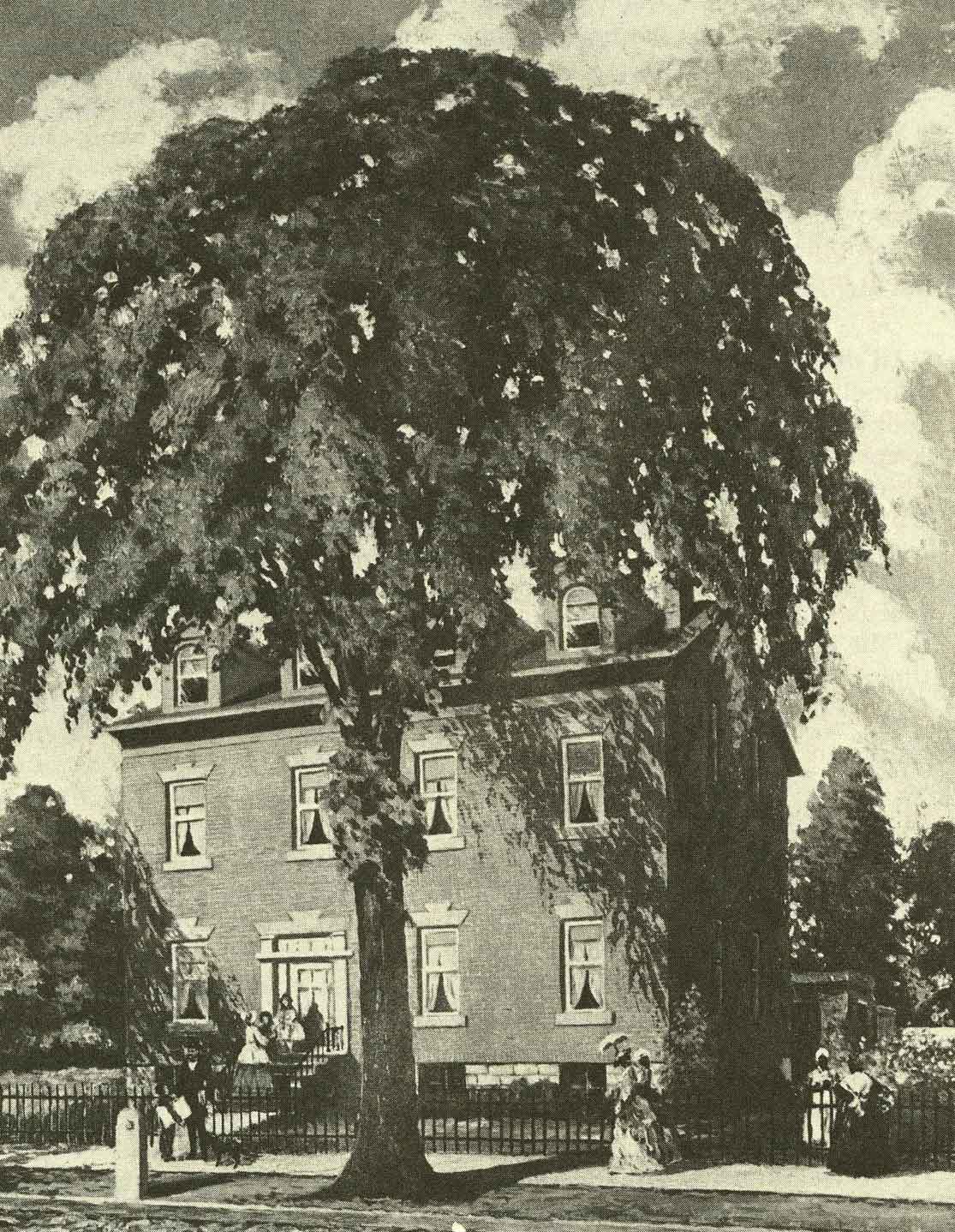Nicholas
Devereux
June 7, 1791-Dec. 29, 1855
 Nicholas Devereux was a descendent of a wealthy
Irish family from County Wexford in Ireland. He was born on the family
estate, which was called "The Leap." Nicholas's older brother,
John, emigrated to the United States and settled in Utica, N.Y. In 1806,
Nicholas followed and worked as a clerk at William James and Company in
Albany. After returning from Ireland in 1814 where he had gone to attend
to his mother's death, Nicholas went to work for his brother John's business in
Utica. In two years
the company prospered under Nicholas's management. In 1823 John retired
and the name of the business was shortened from "John C. and Nicholas
Devereux," to "Devereux & Co."
Nicholas Devereux was a descendent of a wealthy
Irish family from County Wexford in Ireland. He was born on the family
estate, which was called "The Leap." Nicholas's older brother,
John, emigrated to the United States and settled in Utica, N.Y. In 1806,
Nicholas followed and worked as a clerk at William James and Company in
Albany. After returning from Ireland in 1814 where he had gone to attend
to his mother's death, Nicholas went to work for his brother John's business in
Utica. In two years
the company prospered under Nicholas's management. In 1823 John retired
and the name of the business was shortened from "John C. and Nicholas
Devereux," to "Devereux & Co."
On his business trips to New York, he became
friends with the family of Dr. Benjamin Butler. He became especially fond
of Dr. Butler's daughter, Mary Dolbear Butler, and they were married on November
28, 1817. They had 6 children.
Nicholas became a trustee of the New York Life
and Trust Company, which was a life insurance company. Through the
influence of Mary's father, he became the company's only investment agent west
of Albany,
and also became one of the original directors of the Schenectady and Utica
Railroad. Eventually, railroads merged and he became an original
stockholder of the new line. Devereux was also an original director of the
Utica Water Works, and helped establish the Steam Woolen Mills of Utica, where
hew as a stockholder, director, and vice president of the company.
He and his brother also started a banking firm in Utica in 1839, called the
Utica Savings Bank.
From the earnings he made with these companies,
in 1835 he purchased 417,967 acres from the Holland Land Company at 90 cents an
acre. The land extended over Cattaraugus, Allegany, and what is now
Wyoming Counties.
Devereux was also a very religious and generous
man. It is rumored that on his first Sunday in New York at age fifteen, he
attended Mass at old St. Peter's Church, and when the collection plate came
around, he dropped one of his remaining three gold pieces into the plate.
The sexton thought it was a mistake and offered to return it, but Devereux said
it was not a mistake and it was a offering of thanks for his safe trip to
America.

Follow the links below for more on the story of Nicholas and
Mary Devereux and their relationship with St. Bonventure.


Nicholas Devereux' House in Chancellor Square, Utica,
torn down in the early 1920s.
(From a watercolor by Egbert N. Clark belonging to the Savings Bank of Utica.)
 Nicholas Devereux was a descendent of a wealthy
Irish family from County Wexford in Ireland. He was born on the family
estate, which was called "The Leap." Nicholas's older brother,
John, emigrated to the United States and settled in Utica, N.Y. In 1806,
Nicholas followed and worked as a clerk at William James and Company in
Albany. After returning from Ireland in 1814 where he had gone to attend
to his mother's death, Nicholas went to work for his brother John's business in
Utica. In two years
the company prospered under Nicholas's management. In 1823 John retired
and the name of the business was shortened from "John C. and Nicholas
Devereux," to "Devereux & Co."
Nicholas Devereux was a descendent of a wealthy
Irish family from County Wexford in Ireland. He was born on the family
estate, which was called "The Leap." Nicholas's older brother,
John, emigrated to the United States and settled in Utica, N.Y. In 1806,
Nicholas followed and worked as a clerk at William James and Company in
Albany. After returning from Ireland in 1814 where he had gone to attend
to his mother's death, Nicholas went to work for his brother John's business in
Utica. In two years
the company prospered under Nicholas's management. In 1823 John retired
and the name of the business was shortened from "John C. and Nicholas
Devereux," to "Devereux & Co."